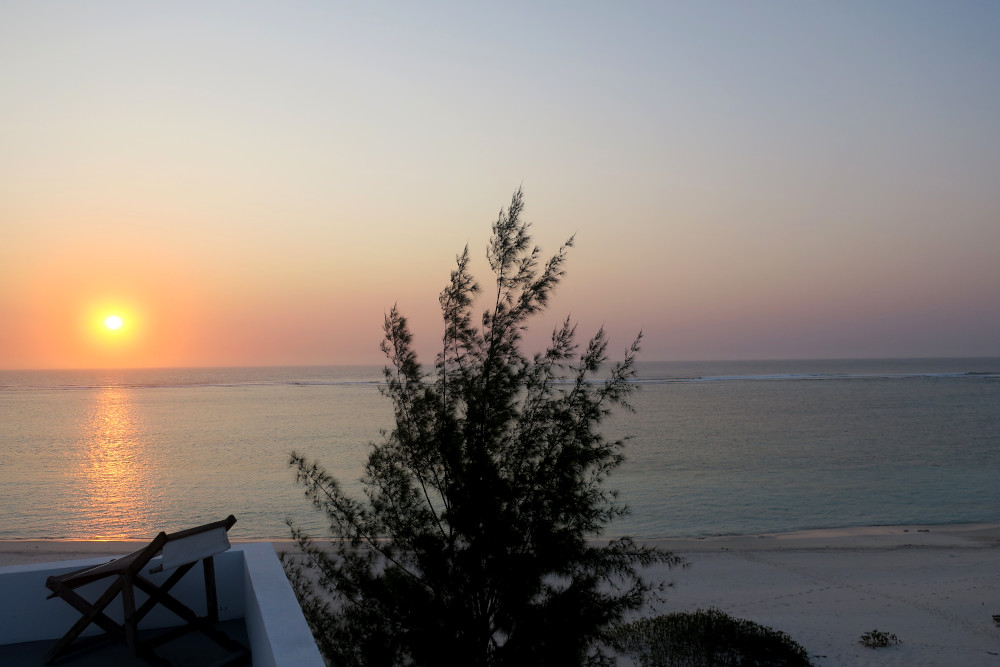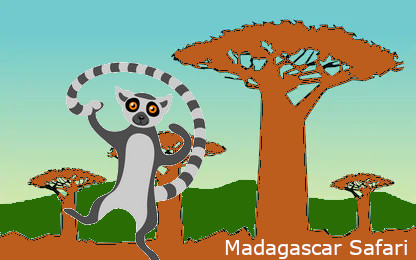- INTRODUCTION
- MALAGASY CULTURE
- MALAGASY TRADITIONAL SPORT
- MALAGASY CUISINE
- BEACHES AND RIVERS
- MONEY AND CREDIT CARDS
- PURCHASE TIPS
- SITES AND ACTIVITIES
- MONUMENTS
- MALASY HANDICRAFTS
- TIPS FOR TRAVELLERS
- MADAGASCAR CONNECTING FLIGHTS
- MADAGASCAR NATIONAL PARKS AND RESERVES
- FAUNA AND FLORA OF MADAGASCAR
- PUBLIC HOLIDAYS IN MADAGASCAR
- THE SOUTH WEST AND WESTERN REGIONS
- THE SOUTH EAST REGION
- THE NORTH WEST REGION
- THE NORTH EAST AND EAST REGIONS
- THE CENTRAL HIGHLANDS
MADAGASCAR’S BEACHES AND RIVERS
BEACH & RIVER ACTIVITIES
Sand and sun
With its 5000 km of shoreline, we cannot do with exoticism. At the rendez-vous, numerous creeks, bays, lagoons and beaches are inviting you to enjoy numerous available activities like fishing, sailing, ski-diving or surf or windsurf. Whale watching has now been chosen by tourists (from july to september).

Fishing and diving
In the east, people of sainte Marie, traditionally used to be great whale hunters. Before going on board, the men used to abstain themselves by not approaching their wives (miala viavy) and by splashing themselves with a sacred liquid called “fankamora”. Their tool was a sort of harpoon linked to a long rope. In the west, each Vezo fisherman possess at least two canoes , one that is simple and the other one with a balancing pole. They build them themselves out of the trunk of a tree called “faratsy”, wood that is reputed for its good capacity to float. The life expectancy of a canoe does not exceed 2 years. Fishermen sometimes have to go as far as 10 kms from the shore because of the competition of industrial fishing. In Madagascar, there are officially 1250 fishermen’s village. Among the most representative, one can cite: Ramena, in the extreme north, a traditional village located in one of the most beautiful bays in the world, and the resort of Antsiranana. Outings to the sea are organized according to the season. Fishing is practised in the indian Ocean or the mozambican channel; in unexploited fishing zones or wild coasts. Nosy Komba where women’s embroideries fly in the wind like standards. Evatra, in the north of Taolagnaro, between lagoon and ocean. Anakao, in the south of tulear, where whale ballets can also be watched seasonally.
Nosy Be and its satellites are, no doubt, the hot spots for modern sportive fishing. One can sometimes practise bottom line, dragnet, rod and reel fishing lancer the same day, depending on the tides. among the most interesting catches is the yellow tuna (april-may), the barracuda (between september and may with “peaks” in October and february), the tuna, sea bream, swordfish. A number of centres have opened in various spots, using the latest techniques. A few hotels have also integrated fishing in their recreational activities. Madagascar’s sea beds are among those which offer the most beautiful spots for divers. You will see an infinity of multi coloured fish with exotic names continuously drawing arabesques in a fairyland of shellfish and corals of indefinable shapes. Then, welcome to the clownish, butterflies, lions, unicorns, napoleons or surgeons, without forgetting the manta rays and the biggest fish in the world, the inoffensive whale-sharks. Spots are located mainly in 3 areas:
The south West, where there is one of the biggest coral barrier in the world. Ifaty and Mangily, 26 kms in the north of Tulear are the top spots, then does Nosy Ve follow , just opposite. Anakao, the largest Vezo fishermen’s village, and Belo-sur-Mer in the south of Morondava.
Nosy Be, of which the first most beautiful 10 spots are:
– Tanikely, for beginners and all levels, sea beds rich in colours and a great variety of marine fauna.
– the epave Za¨da, a trawler which has been sunk on purpose, for level ii. average visibility but impressive fauna. – the Manta point, for level
– sand plateau sprinkled with very colourful corals. – the Corail noir, for level
– recently discovered. colonies of black corals that may be up to 1.5 m high, very impressive. – the Grotte, for level
– sand bed between 18 and 26 m, and caves – the Banc du Chameau for level
– two plateaus rich in hard coral and soft coral. – the pain de sucre, for level
– a rocky peak inlaid with shellfish to the south, and colonised by corals forming a fabulous garden on its west and north sides. – the slope of Nosy iranja, for level at the limits of the continental plateau. – Grey Wall at radama islands, level preferable, a slope offering a grandiose sight
between 13 and 38 m.
– the Banc du petit Castor at Mitsio islands, for level i. diving on the outside slope, a
plateau covered with magnificent tables of coral.
sainte Marie, with beautiful spots such as:
– the ile aux Nattes, 2 spots outside the lagoon and one under the wreck.
– the ilots aux sables, 2 natural aquariums where visibility is exceptionally clear.
– the ile aux Baleines, which formed itself on an outcrop of coral reef.
– the pointe à Larrée, privileged spot for pelagic fish.
– the Cocoteraie, an exceptional diving spot under a huge wreck 30 m long.
… in all these spots, at Nosy Be, sainte marie or in the south West, you will be enchanted by a multicoloured sea fauna whose
beauty and variety would never be described by mere listing.
Surf and Windsurf
Madagascar has heavenly spots for those who have a passion for swells. In Taolagnaro, Vinanibe has the most beautiful waves in the region, with logistics and infrastructures for accommodation in its water sports centre. 300 km from there, Lavanono has already hosted a world competition. Access is not easy and bivouac is necessary, but.. here is the Promised sea, it is worth the effort! The ideal spot for initiation is at Mahambo, in the north of Toamasina: appropriate safety materials, instructors, beachguards, top international standards applied. Lastly, Air Madagascar has experienced windsurf in the Bay of the sakalava, near Diego Suarez with the participation of authentic world champions. When will be the next event ?
Sailing
It is mostly concentrated in the North-West where the weather is favourable practically throughout the year , except in february and march. The east coast is protected from the heavy swell by the Big land, and the winds are hot. Operators are experienced people and have a thorough knowledge of the region, and their fleets of monohulls or multihulls can accommodate groups of 2 to 8 people. Team generally comprises a skipper, a cook and in some cases an additional sailor. Itinerary may include going up rivers in the heart of mangroves, stopping at pristine spots, contact with the population and their living traditions. You will feel yourself at the farest edge of the earth at Nosy mamoko, sometimes forgotten by mapmakers, or Kisimany where, each year, a sailing boat from Zanzibar comes for a supply of shark oil!
Navigable Waterways
The Manambolo River
To go to Manambolo, first we have to cross the splendid volcanic region of Itasy. The descent is generally by canoe¨ from Ankavandra through a landscape which gives you the feeling of being on the moon at times, but where life is never totally absent. For example, sometimes flocks of children run along the shore to accompany the boats and greet you with their innocent laughter. It is not only sailing for the sake of it, as other attractions are organized during the route, excursions in the canyons,refreshing halts at natural swimming pools, nights in bivouac. One of the highlights is the crossing of the gorges upstream Bekopaka, and on the cliff side, the entrances of mysterious caves. Bekopaka, a must-stay on the route to the tsingy, is bustling with life until about 9 pm; on the one hand the tourists preparing their programme visit, and on the other hand people of the village are busy to sell their small products. After crossing the neighbouring Tsiribihina by ferry, the dry forest of Kirindy gives an overview of its vegetation and fauna with its reptiles, birds and lemurs. Then it is a combination of land-water “soft” but rich in colourful discoveries. Then Morondava, and passing,everyone would have guessed it, along the famous Baobab lane…
The Tsiribihina River
The majestic Tsiribihina will lead you to the immense spaces of the West. Miandrivazo, the boarding point, is reached via Antsirabe, the capital of the fertile region of Vakinankaratra. The Tsiribihina and its tributaries used to be enlivened by the barges going up and down the river to transport tobacco from isolated plantations. The same barges have been kept, but fitted for carrying passengers, with a kitchen at the back and a solarium on the roof! Guides know well which afluent to take to reach any one of the numerous falls and their crystalline waters along the route.
No one would think of depriving oneself of a halt in the shade of kapok and mango trees. From Belo-sur-Tsiribihina, main venue of the ceremony Fitampoha, a track leads to Bekopaka in a half a day’s travel to the furthermost bounds of the spectacular tsingy of Bemaraha. We are all totally in the land of “earthly” adventure and discovery now. Then road to the south again, and we are in the country of 7 varieties of baobabs. Terminus at Morondava for those wishing to stop, for others there is a 80kms “small” extension to Belo-sur-Mer and its traditional shipyards.
